Northern Flickers
4/16/17
By David Brown
Think of a bird that you would expect to see on the ground. Perhaps you might think of the American robin or some sort of sparrow. But what about a woodpecker?
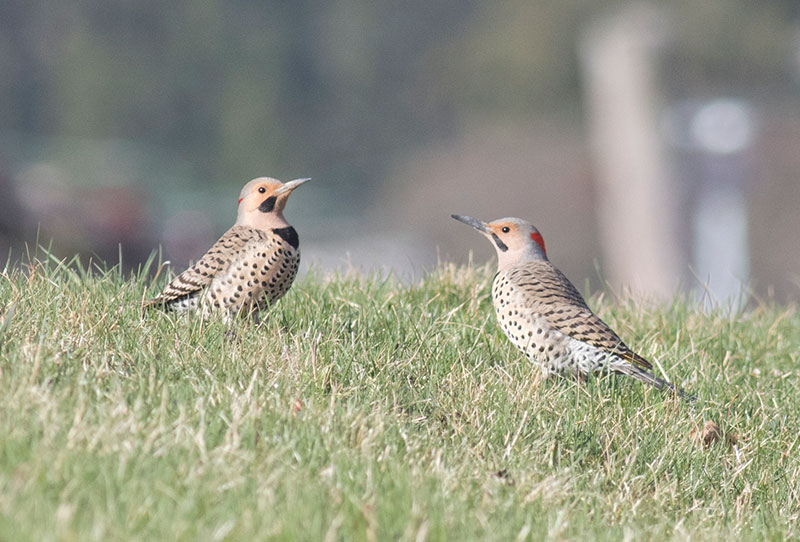
Northern Flickers
The northern flicker is a common woodpecker that feeds on the ground and primarily eat ants. It is the most widespread and abundant woodpecker in North America.
The northern flicker is our second largest woodpecker, behind the pileated woodpecker. Overall northern flickers are brown and gray. They have a black bib and spotted underside. The wings and back are tan with black barring. Northern flickers have a conspicuous white rump patch visible in flight. Males have a mustache stripe which females lack.

Northern Flicker in flight
In the eastern United States northern flickers have yellow feather shafts. Ones in the west have red feather shafts. These two types used to be considered separate species but are now the same. I have observed flickers locally that have some red feather shafts which is likely due to diet, perhaps from non-native honeysuckle. Yellow-shafted flickers have a red patch on the back of the neck that the red-shafted variety does not have. There are no similar species in eastern North America.
Northern Flickers are found locally year-round but are less common in winter. Though ants are the preferred diet, they will also eat berries, fruit, and seeds. Pennsylvania gets a big influx of migrating northern flickers in April. They are often found in forest edge habitat and are frequently seen in residential areas, so this is a species you can certainly expect to see in your yard, especially in the spring.
Courtship and territorial displays for flickers involves head swaying. Last year in South Williamsport I saw two male flickers perched on the same branch facing each other and moving their heads in what resembled a mock sword fight. Perhaps a female was watching from nearby.
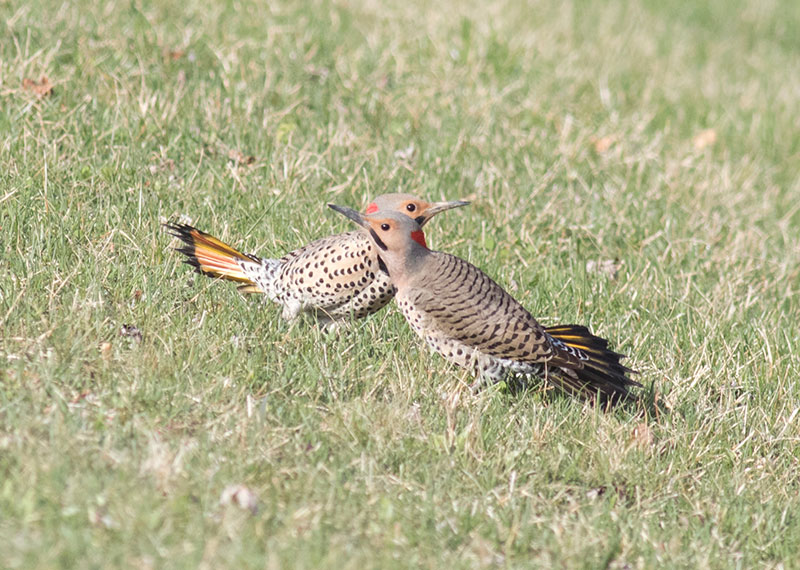
Northern Flickers
Northern flickers are cavity nesters and will excavate their own holes. They will also reuse old nest sites. Recently I have observed a pair of flickers at a nest site that flickers used last year as well. Unlike most other woodpecker species they will use nest boxes.
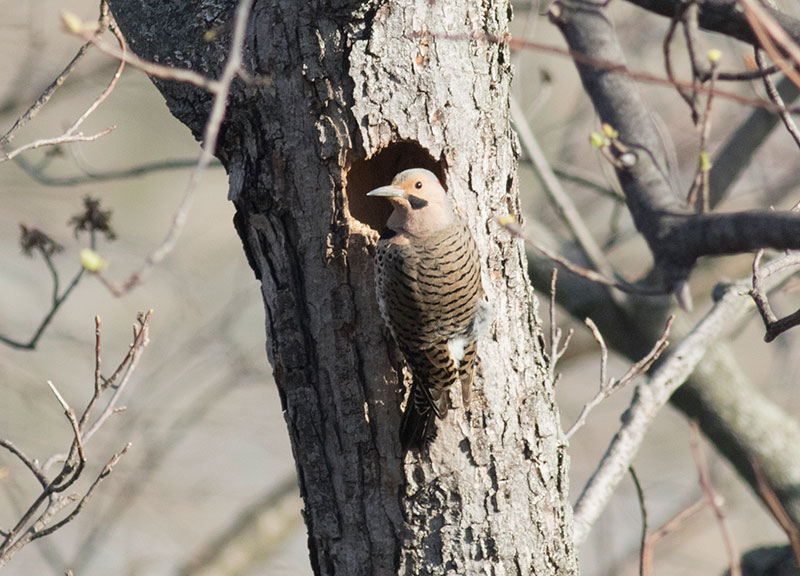
Northern Flicker near cavity
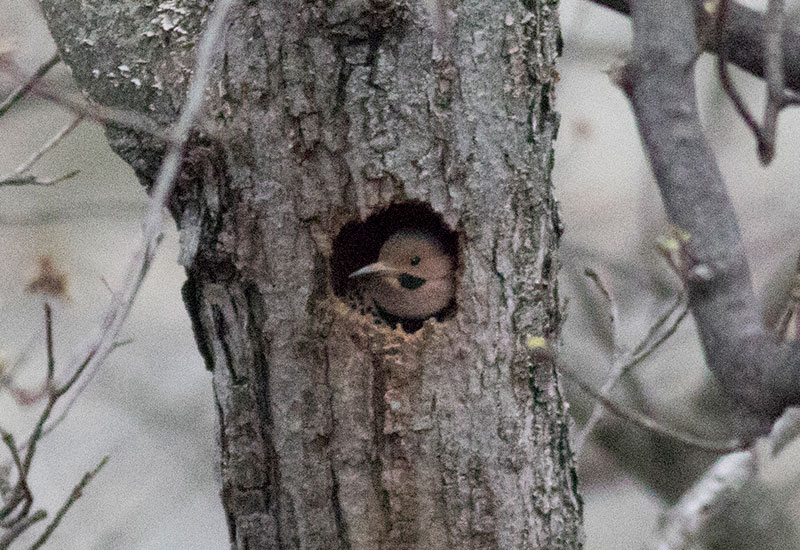
Northern Flicker in cavity
The northern flicker is the state bird of Alabama where it is given the colloquial name “yellowhammer.” That is the only state with a woodpecker as the state bird.
Threats to the northern flicker include habitat loss and competition with the invasive European starling for nest sites.
April and May are two of the most exciting months for birding so get outside and look for northern flickers and more than 200 other bird species that you can see locally in the spring.
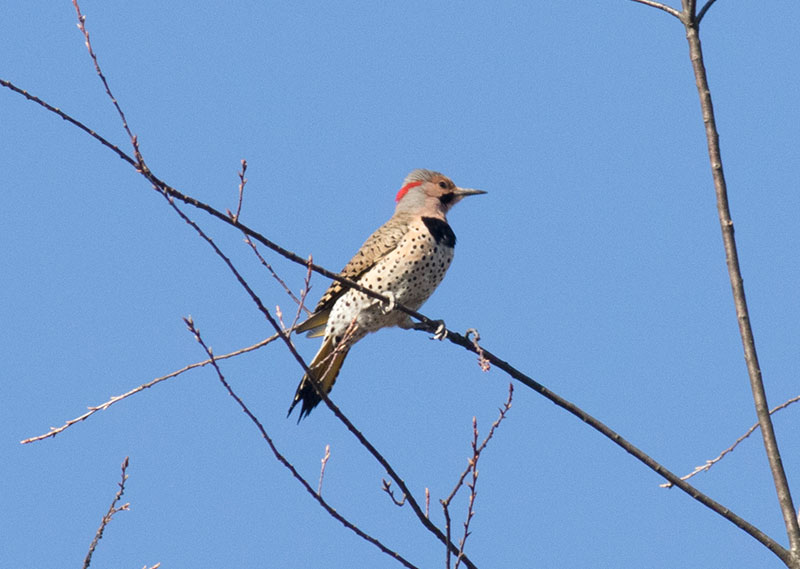
Northern Flicker